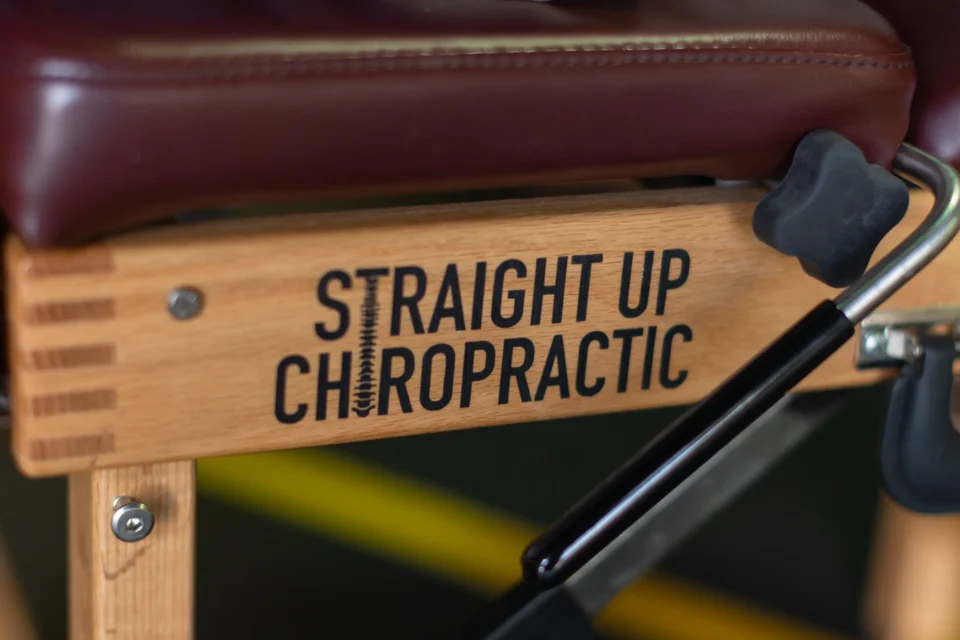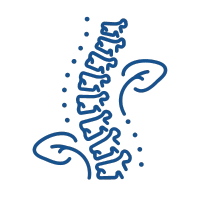Back pain affects millions of people worldwide, and spinal disc problems are among the most common culprits. Your spine contains 23 discs that act as cushions between your vertebrae, absorbing shock and allowing flexible movement. When these discs become damaged or deteriorate, they can cause significant pain and limit your daily activities.
Understanding spinal disc problems is the first step toward finding effective treatment. This comprehensive guide will walk you through the most common types of disc issues, their symptoms, causes, and treatment options. You’ll also discover how specialized chiropractic care can provide lasting relief without the need for surgery or long-term medication dependence.
Common Types of Spinal Disc Issues
Herniated Discs
A herniated disc occurs when the soft, gel-like center of a spinal disc pushes through a crack in the outer layer. This condition is also known as a slipped disc or ruptured disc. The protruding disc material can press against nearby nerves, causing pain, numbness, and weakness.
Herniated discs most commonly affect the lower back (lumbar spine) and neck (cervical spine). The pain can range from mild to severe and may radiate to other areas of the body. For example, a herniated disc in the lower back might cause pain that travels down your leg, a condition known as sciatica.
The severity of symptoms depends on the location and size of the herniation. Some people experience intense pain that makes it difficult to perform daily activities, while others may have minimal discomfort.
Bulging Discs
A bulging disc is different from a herniated disc, though the terms are often confused. With a bulging disc, the outer layer of the disc remains intact, but the disc extends beyond its normal boundary. Think of it like a hamburger that’s too big for its bun – the edges stick out.
Bulging discs are more common than herniated discs and often develop as part of the natural aging process. Many people have bulging discs without experiencing any symptoms. However, when the bulging disc presses against spinal nerves, it can cause pain, tingling, and muscle weakness.
This condition typically develops gradually over time, unlike herniated discs which can occur suddenly due to injury or strain.
Degenerative Disc Disease
Despite its name, degenerative disc disease isn’t actually a disease – it’s a condition that describes the natural breakdown of spinal discs over time. As we age, our discs lose water content and become less flexible, making them more prone to damage.
This degenerative process can lead to several problems:
- Reduced disc height, which can cause vertebrae to move closer together
- Increased stress on the facet joints of the spine
- Formation of bone spurs
- Narrowing of the spinal canal
Degenerative disc disease most commonly affects the lower back and neck, areas that experience the most movement and stress throughout daily life.
Thinning Discs
Disc thinning, also called disc desiccation, occurs when spinal discs lose their water content and height. Healthy discs are about 80% water, which gives them their shock-absorbing properties. As discs dry out, they become thinner and less effective at cushioning the vertebrae.
This condition can result from:
- Natural aging processes
- Repetitive stress on the spine
- Poor posture
- Lack of physical activity
- Smoking, which reduces blood flow to the discs
Thinning discs can lead to increased pressure on the facet joints and may contribute to spinal stenosis, a narrowing of the spinal canal.
Symptoms of Spinal Disc Problems
Spinal disc problems can manifest in various ways, depending on the location and severity of the issue. Recognizing these symptoms early can help you seek appropriate treatment before the condition worsens.
Lower Back Symptoms:
- Sharp or burning pain in the lower back
- Pain that radiates down one or both legs
- Numbness or tingling in the legs or feet
- Muscle weakness in the legs
- Difficulty walking or standing for extended periods
- Pain that worsens with sitting, bending, or coughing
Neck Symptoms:
- Neck pain that may extend to the shoulders
- Headaches, particularly at the base of the skull
- Arm pain, numbness, or tingling
- Weakness in the arms or hands
- Difficulty with fine motor tasks like writing or buttoning clothes
General Symptoms:
- Stiffness and reduced range of motion
- Muscle spasms
- Changes in reflexes
- Pain that varies with activity level and position
It’s important to note that some people with disc problems experience no symptoms at all. This is why regular check-ups with a healthcare provider are valuable for maintaining spinal health.
Causes and Risk Factors
Understanding what causes spinal disc problems can help you take preventive measures and make informed decisions about your treatment. Several factors contribute to disc degeneration and injury:
Age-Related Factors:
The aging process naturally affects spinal discs. As we get older, discs lose water content and elasticity, making them more susceptible to damage. This process typically begins in our 30s and continues throughout life.
Lifestyle Factors:
- Sedentary lifestyle: Lack of regular exercise weakens the muscles that support the spine
- Poor posture: Prolonged sitting or standing with poor posture increases disc pressure
- Smoking: Reduces blood flow to the discs, impairing their ability to heal and maintain themselves
- Obesity: Excess weight puts additional stress on the lower back discs
Occupational Hazards:
- Jobs requiring heavy lifting, bending, or twisting
- Prolonged sitting or standing
- Repetitive motions that stress the spine
- Exposure to vibration from vehicles or machinery
Physical Factors:
- Genetics: Some people are born with spinal abnormalities or have a family history of disc problems
- Previous injuries: Trauma to the spine can weaken discs over time
- Sudden movements or improper lifting techniques
Other Contributing Factors:
- Dehydration: Discs need adequate hydration to maintain their cushioning properties
- Nutritional deficiencies: Poor nutrition can affect disc health
- Stress: Chronic stress can contribute to muscle tension and poor posture
Diagnosis and Treatment Options
Accurate diagnosis is crucial for effective treatment of spinal disc problems. Healthcare providers use various methods to identify the specific type and severity of disc issues.
Diagnostic Methods:
- Physical examination: Assessment of posture, range of motion, and neurological function
- Medical history: Discussion of symptoms, pain patterns, and contributing factors
- Imaging studies: X-rays, MRI, or CT scans to visualize disc structure and identify problems
- Neurological tests: Evaluation of reflexes, muscle strength, and sensation
Conservative Treatment Options:
Most spinal disc problems can be effectively treated without surgery. Conservative approaches include:
- Rest and activity modification
- Physical therapy and exercise programs
- Pain management techniques
- Anti-inflammatory medications
- Heat and cold therapy
- Lifestyle modifications
Advanced Treatment Approaches:
When conservative treatments aren’t sufficient, advanced options may be considered:
- Specialized chiropractic techniques
- Targeted injections
- Minimally invasive procedures
- Surgery (reserved for severe cases that don’t respond to other treatments)
The Straight Up Chiropractic Approach
At Straight Up Chiropractic in St. George, UT, Dr. Gavin Hall takes a unique approach to treating spinal disc problems. Unlike traditional chiropractic care that focuses primarily on spinal adjustments, Dr. Hall’s methods address the entire body to promote comprehensive healing.
Advanced Muscle Integration Technique (AMIT):
AMIT is a specialized technique that identifies and corrects muscle imbalances that contribute to spinal disc problems. This approach recognizes that weak or inhibited muscles can alter spinal mechanics and increase stress on the discs. By restoring proper muscle function, AMIT helps:
- Reduce pressure on spinal discs
- Improve spinal stability
- Enhance the body’s natural healing processes
- Prevent future disc problems
Neural Pathway Integration (NPI):
NPI focuses on correcting neurological inhibitions that can affect spinal function. This gentle, non-invasive technique helps restore proper communication between the brain and body, promoting optimal healing and function.
Comprehensive Full-Body Care:
Rather than treating just the spine, Dr. Hall’s approach addresses the entire musculoskeletal system. This comprehensive care ensures that all contributing factors to disc problems are identified and treated, leading to better outcomes and longer-lasting relief.
Benefits of Chiropractic Care for Spinal Discs
Chiropractic care offers numerous advantages for people with spinal disc problems:
Non-Invasive Treatment:
Chiropractic techniques provide relief without surgery or invasive procedures. This approach minimizes risks and allows for faster recovery times.
Drug-Free Pain Relief:
Many patients experience significant pain reduction without relying on medications, avoiding potential side effects and dependency issues.
Improved Function:
Chiropractic care focuses on restoring proper movement and function, helping patients return to their normal activities more quickly.
Personalized Treatment Plans:
Each patient receives a customized treatment plan based on their specific condition, symptoms, and goals.
Long-Term Benefits:
By addressing the root causes of disc problems, chiropractic care can provide lasting relief and help prevent future issues.
Holistic Approach:
Chiropractic care considers the whole person, including lifestyle factors, posture, and overall health, leading to more comprehensive healing.
Patient Success Stories
The effectiveness of specialized chiropractic care for spinal disc problems is best illustrated through patient experiences. At Straight Up Chiropractic, many patients have found relief from disc-related pain and returned to active, fulfilling lives.
One patient, Karen L., shared her experience: “I’ve been searching for help from my back and related problems for 35 years and have never experienced the relief that Dr. Hall has been able to provide. And, I’ve only been seeing him for a little over a month. 100% recommend his untraditional ways to anybody and everybody.”
Another patient, Derek H., described his treatment: “Dr Hall is great! He takes his time, he’s thorough and NOT an in and out kind of practitioner. I felt as he listened to my actual complaint. He helped me recover from a jiu jitsu injury. His muscle work is unlike any practitioner I’ve ever met and his shoulder adjustment is game changing!”
These testimonials highlight the personalized, comprehensive care that can make a significant difference in treating spinal disc problems. Dr. Hall’s unique approach, combining AMIT, NPI, and full-body adjustments, addresses not just the symptoms but the underlying causes of disc issues.
Take the Next Step Toward Spinal Health
Spinal disc problems don’t have to control your life. With proper understanding
and the right treatment, you can regain mobility, reduce pain, and improve your overall quality of life. Dr. Hall’s methods are designed to empower patients, giving them the tools and knowledge to actively participate in their own healing process. Whether you’re dealing with chronic discomfort or acute pain due to a spinal disc issue, taking proactive steps can lead to long-lasting relief.
Don’t wait to address your spinal health. Book a consultation with Dr. Hall today and take the first step toward a pain-free, active lifestyle. With the right care and support, spinal health can be within your reach.



